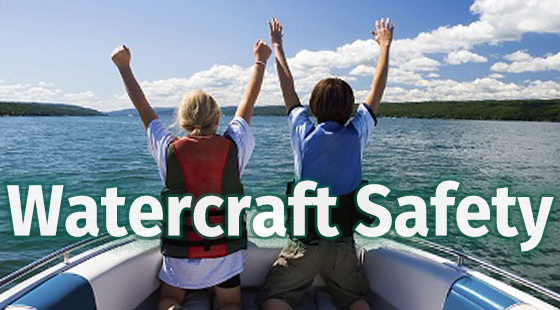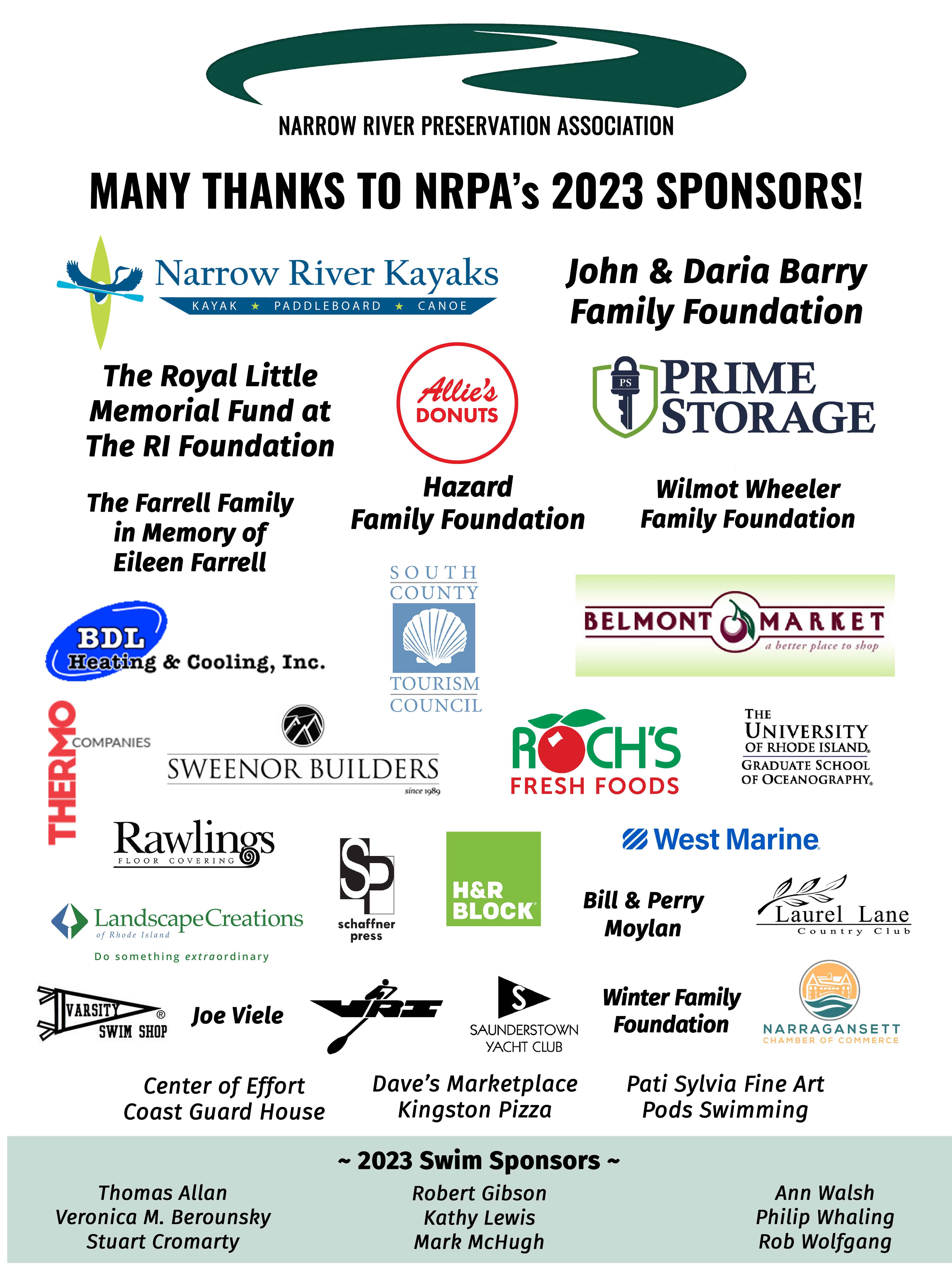
Monitoring the health of the watershed is the first and perhaps the most important job of any watershed organization, a role that NRPA takes very seriously. Since 1992, NRPA’s volunteer river monitors have tested water in Narrow River and its major freshwater inputs from May through October as part of URI Watershed Watch.
By checking temperature, salinity, oxygen, bacteria and other measures at thirteen different locations in the watershed, we are able to assess the cleanliness of the water and identify problems so that we can implement solutions.

Click here to see a summary of River Watch findings as presented by Annette DeSilva and Veronica Berounsky at NRPA’s Annual meeting held on October 3, 2023.
Check out this video to learn more about water quality sampling at our deep water sites in Upper and Lower Pond.
CLICK HERE to see the full article on 25 years of River Watch Data from October 2017.
CLICK HERE to see the Power Point presentation on 25 years of River Watch Data from October 2017
The number of testing sites has grown since the start of NRPA River Watch and we now monitor 13 sites, including stormwater abatement sites installed in the last ten years as part of best management practices by R.I. Department of Environmental Management and the Town of Narragansett.
Monitoring the health of the watershed is the first and perhaps the most important job of any watershed organization, a role that NRPA takes very seriously. Since 1992, NRPA’s volunteer river monitors have tested water in Narrow River and its major freshwater inputs from May through October as part of University of Rhode Island Watershed Watch (URIWW) Program. NRPA provides the volunteer river monitors and another volunteer who organizes and coordinates the river monitors. URIWW provides training for the volunteers, initial monitoring supplies, and laboratory analysis of water samples.
Watershed Watch & River Watch Goals:
- To promote active citizen participation in water quality protection
- To educate the public about water quality issues
- To obtain multi-year surface water quality information in order to ascertain current conditions and detect trends
- To encourage sound management programs based on water quality information
The monitoring season runs between May and October annually. Every two weeks during the season, volunteer water monitors measure water temperature and dissolved oxygen, filter water for chlorophyll analysis by the URI Watershed Watch laboratory and collect samples for salinity measurement at each of the thirteen test sites. On six of those testing days, the monitors also collect samples for additional analysis of bacteria, nutrients, and pH at URI’s Watershed Watch lab . These are the recommended tests and measurements need to understand and quantify the water quality of a river.
Importantly, our program is run completely by volunteers. Since 1992, more than 200 hundred individuals have volunteered their time and service to participate in the program.
Because of Narrow River Preservation Association’s reputation for reliable river monitoring, when the U.S. Fish and Wildlife Service needed water monitoring done in anticipation of their coastal resilience work in lower Narrow River in 2015, they came to NRPA. Data and samples were collected from the waters within the river as well as the tributaries feeding into the River to better understand the impacts of these inputs. This project temporarily added 11 new monitoring sites to the existing sites of the NRPA River Watch program, and they were paid for by USFWS. NRPA is proud to be trusted by the US Fish and Wildlife Service for this critical research.

By testing the water in the river at several sites, NRPA is able to identify problems and seek resolution to those problems. For instance, after several years of high bacteria counts in River Watch samples taken from three areas of the river, NRPA with funds from the US Fish and Wildlife Service, worked with The Nature Conservancy, the Rhode Island Department of Environmental Management and the Towns of Narragansett and South Kingstown to use an innovative method of locating human contamination: Canine Detection. In the summer of 2018, NRPA sent water samples to their laboratory in Maine for trained canines to identify whether or not each was contaminated by human waste. Based on those results, NRPA volunteers, RIDEM staff, and town personnel identified areas in the watershed with problems and they then accompanied two dogs and their handlers as they sniffed their way from known areas of contamination to potential sources of such contamination along parts of Narrow River. Now that results have been processed, NRPA and RIDEM are working with Narragansett and South Kingstown town engineering departments to correct leakages that may be the source of the contamination.
Other actions taken based on River Watch data:
- Shortly after the program started, an outhouse along Gilbert Stuart Stream was removed, resulting in clean water samples within a few weeks after the removal
- Detention ponds were installed at Circuit Drive (2004) and Mettatuxet Beach (2006)
- A Stormwater BMP (Best Management Practices) system was installed at Edgewater and also Pettaquamscutt Terrace in 2010. The sand filter slows down the flow of stormwater, keeps it in the sunlight, and filters it to reduce the amount of bacteria that flows into the river

Because of coliform bacteria, Narrow River is currently closed to shellfishing and, as late as 2008, was on the Rhode Island List of Impaired Waters. NRPA is working with the R.I. Department of Environmental Management (DEM) and the U.S. Environmental Protection Agency to improve the water quality of the Narrow River. (For more information on statewide monitoring of water quality and the determination of the Impaired Waters, visit the Water Quality page on the DEM website.)
In 2016, volunteers completed 25 years of water quality monitoring of Narrow River. The 2017 NRPA Annual Meeting featured a presentation on NRPA’s Narrow River volunteer water monitoring program by NRPA Board Members Dr. Veronica Berounsky and Annette DeSilva.
Veronica and Annette presented an overview of the data from monitoring sites that span the length of the river from Gilbert Stuart Stream to Pettaquamscutt Cove including findings from analyses of water quality trends, seasonality patterns, and storm events. Summaries of bacterial and nutrient level data were reviewed along with comparisons among the various river monitoring locations.


The talk provided an interesting perspective of how some past activities may have influenced water quality. If you have ever wondered about the health of the river and asked questions such as “Has the health of the river changed over years?” we encourage you to read the article and view the PowerPoint presentation.
CLICK HERE to see the full article on 25 years of River Watch Data.
CLICK HERE to see the Power Point presentation on 25 years of River Watch Data.
Information about how to be a volunteer monitor and training opportunities are available on the URI Watershed Watch webpage, Getting Involved. To volunteer, please complete and submit the form at: web.uri.edu/
Interested in becoming a volunteer monitor for River Watch? We gladly accept new monitors each spring!
Frequently Asked Questions about being a volunteer river monitor:
Question: I don’t know what to do. Will I get training?
Answer: Yes! Volunteers are trained by the URI Watershed Watch program to be Citizen Scientists. You’ll attend one classroom training (optional, but highly recommended) and one field training session. Trainings occur in April.
Q: Do I have to have a boat?
A: No. We have sampling locations that can be reached by land and others that require a boat (power boat, kayak or canoe). If you don’t have a boat, we can assign you to a spot you can reach by land.
Q: Where will I be assigned to sample?
A: Our River Watch coordinator, Annette DeSilva, will work with you to match you to a site that works for you.
Q: Will I have to miss my vacation to stay here and sample?
A: No. We try to assign each monitoring location with two volunteer monitors. This allows volunteers to work out their schedule to accommodate vacation plans.
Q: Does it cost money?
A: No. All we ask of you is your time and enthusiasm. All supplies are provided.
Q: Can my kids help?
A: Yes! We have many families who sample together. As long as an adult accompanies children, we welcome young river monitors.
Q: I have more questions. Where can I get more information?
A: Check out URI’s Watershed Watch.
Q: Sounds great! How do I get started?
A: Email us at nrpa@narrowriver.org. We look forward to working with you!







